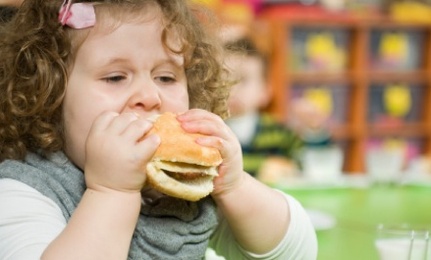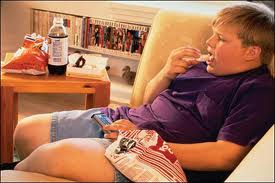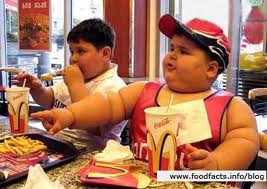Controling Our Children With Food

Saying No to Your Children
A man of 33 who has lived with his mother all of his life, tips the scales at 881 pounds. He is in a hospital bed fighting for his life and his mother shoves another box of fried chicken in his face to consume.
Yes this is true and his mother should be in prison. It's abuse plain and simple. At 33 years old, this man who was once a child, suffered at the hands of his mother, who thought food was the only way to make her beloved son happy. Even as his life is ending, she is shoving food in front of him in the ICU as he can barely breath.
In a Chili's restuarant a 12 year old child, who is tipping the scales at 250, is allowed to order two appetizers and not one but three full size dinners and consumes every ounce of food. Not even a bite left to take home.
These are two things I have witnessed in the last two weeks and it's ashame that parents are killing their children with food. Wake up people this is becoming serious health issues. It sickens me that a parent can get 99 years in prison for super glueing their childs hands to a wall but nothing happens to them for killing their child with a slow, miserable death.
Child obesity deaths have become the 5th leading cause of death in the United States. It shouldn't even make the top ten.
Wake up people, you owe it to take care of your children and provide safety and happiness. Not kill them with food. You owe it to your child to love them enough to say no to them when they are over eating. No child needs to consume 4,000 calories in one sitting.
This is a growing problem and it needs to stop. Children only do what we let them. They need parents who will advise them of the proper way to eat. Stop killing our children with food.
We promote this behavior

Facts From the CDC
Childhood Obesity Facts
- Childhood obesity has more than doubled in children and tripled in adolescents in the past 30 years.
- The percentage of children aged 6–11 years in the United States who were obese increased from 7% in 1980 to nearly 18% in 2010. Similarly, the percentage of adolescents aged 12–19 years who were obese increased from 5% to 18% over the same period.
- In 2010, more than one third of children and adolescents were overweight or obese.
- Overweight is defined as having excess body weight for a particular height from fat, muscle, bone, water, or a combination of these factors.3Obesity is defined as having excess body fat
- Overweight and obesity are the result of “caloric imbalance”—too few calories expended for the amount of calories consumed—and are affected by various genetic, behavioral, and environmental factors.
-
Immediate health effects:
- Obese youth are more likely to have risk factors for cardiovascular disease, such as high cholesterol or high blood pressure. In a population-based sample of 5- to 17-year-olds, 70% of obese youth had at least one risk factor for cardiovascular disease.
- Obese adolescents are more likely to have prediabetes, a condition in which blood glucose levels indicate a high risk for development of diabetes.
- Children and adolescents who are obese are at greater risk for bone and joint problems, sleep apnea, and social and psychological problems such as stigmatization and poor self-esteem.
Long-term health effects:
- Children and adolescents who are obese are likely to be obese as adults and are therefore more at risk for adult health problems such as heart disease, type 2 diabetes, stroke, several types of cancer, and osteoarthritis. One study showed that children who became obese as early as age 2 were more likely to be obese as adults.
- Overweight and obesity are associated with increased risk for many types of cancer, including cancer of the breast, colon, endometrium, esophagus, kidney, pancreas, gall bladder, thyroid, ovary, cervix, and prostate, as well as multiple myeloma and Hodgkin’s lymphoma.
Prevention
- Healthy lifestyle habits, including healthy eating and physical activity, can lower the risk of becoming obese and developing related diseases.
- The dietary and physical activity behaviors of children and adolescents are influenced by many sectors of society, including families, communities, schools, child care settings, medical care providers, faith-based institutions, government agencies, the media, and the food and beverage industries and entertainment industries.
- Schools play a particularly critical role by establishing a safe and supportive environment with policies and practices that support healthy behaviors. Schools also provide opportunities for students to learn about and practice healthy eating and physical activity behaviors.
Key Resources

Are we responsible for our children's welfare including what they eat
You Owe it to Your Children
As a parent, you owe it to your children to provide nutritional food and healthy snacks. Encourage them to play outside instead of sitting them in front of a TV to watch movies or play video games.
Most insurance companies will pay for your child to have a nutritionist. Take all the junk food out of your house and don't allow them to have it all the time. There is nothing wrong with it once in a while but everyday no it is not good parenting.
Obesity is a horrible disease and you need to help your family get healthy. Take everyone for a walk every night after dinner to burn some calories.
If you are a low income family, you can still buy healthy food without breaking your bank account. It's all about planning. If you plan out your meals for a week, you only get what you need for them and that is all.
Help you child become a healthy and happy adult.



